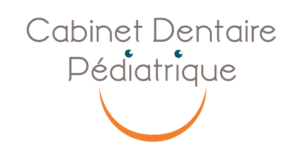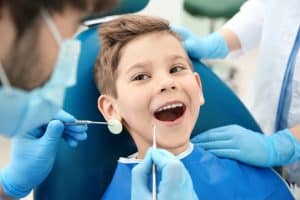One out of two children suffers an oral trauma before the age of 12. These shocks affect the integrity of the tooth and the surrounding tissues.
The consequences of a dental trauma can appear immediately or a few weeks or even months after the shock. This is why it is advisable to consult a dentist even if no lesions are apparent.
Depending on the case, the treatment is performed as an emergency or at a later date.
There are many symptoms that can appear after a shock. It is important to identify them and to know what to do because a shock on the baby teeth can have consequences on the permanent teeth.
What is considered an impact on a baby tooth?
In general, a dental trauma is an injury due to an impact on one or more teeth. Contusion, cracked, broken or dislocated teeth, the impact can cause more or less important lesions.
The front teeth are generally the most affected. The upper incisors and canines, in particular, are particularly exposed, unlike the premolars and molars which are more protected because they are located at the back of the mouth.
The main causes of impact on baby teeth
If the causes of dental trauma can be multiple, in children, two causes are mainly observed.
Learning to walk: baby falls on a baby tooth
A baby in the process of discovering the world has difficulty escaping shocks, the causes of which vary according to age. Between the ages of one and two, falls related to learning to walk cause the most shocks.
Hustle and bustle at school and dental shock
From the age of three or four, pushing and shoving in the playground is common and can also cause a shock to the baby teeth. A bad blow, a fall on the ground or a shock against another surface (wall, table, bench, etc.) regularly leads to dental trauma.
The consequences of a shock on the milk teeth
Trauma to a baby tooth can cause pain or have visible consequences. The tooth may break, shift, or become weakened.
The luxation of the milk tooth
Dislocation represents the abnormal mobility or displacement of the tooth in its socket. The tooth is then at an angle or can turn on itself.
The desmodont (ligament of the tooth) can, during an impact, be damaged and lead to a partial or total luxation.
The most common case in children is subluxation, a dislocation that involves only the tooth and not the alveolar bone.
Other consequences of an impact on a baby tooth
Tooth dislocation is not the only consequence. One can also face :
- An eruption: a tooth partially comes out of its socket,
- An expulsion: a tooth comes out completely from the gum,
- An intrusion or ingression: a tooth is pushed into the jawbone.
Impacts to baby teeth are even more risky when the child is still sucking his thumb or using a pacifier. This is because sucking causes the upper and lower teeth to be misaligned.
Because of this gap, upon impact, the baby tooth can sink into the bone and cut blood vessels and nerves. This can lead to necrosis of the tooth, which turns gray a few weeks or months or years later without necessarily falling out.
In addition, during a dental trauma, lesions can appear on other parts of the mouth:
- Bones and gums,
- Oral mucosa (lips and cheeks),
- Language.
Shock on a baby tooth: what should be done?
The pitfall to avoid is to minimize the incident thinking that it is a temporary tooth. The root of a baby tooth is in direct contact with the germ of the permanent tooth. Therefore, an impact on a baby tooth can have consequences on the permanent tooth such as stains or deformities.
A rarer risk of trauma to a baby tooth is that the permanent tooth will be blocked and never come out.
When to see the dentist?
The first thing to do after a trauma is to reassure the child, stay calm and clean the mouth with clear water or saline.
To know if the situation requires a consultation, it is necessary to observe a few indicators.
The tooth has not been impacted but the lip, inner cheek or tongue are damaged
If the wound is soiled or deep, it is necessary to consult urgently. If it is not, it should be cleaned and its evolution observed.
Teeth have been impacted
An emergency consultation is required if:
- The tooth moves a lot or slightly but the child is in pain and has difficulty closing his mouth
- The tooth is broken and bleeding or is very painful
- The tooth was displaced during the impact
- The tooth is cracked but not broken
- The tooth is broken but there is no bleeding in the mouth,
- The tooth is slightly displaced
- The tooth has been expelled - in this case, it is necessary to apply a compress on the gum until the bleeding stops
What does the dentist do if a baby tooth is impacted?
After cleaning the wound, the pedodontist performs the necessary care:
- Suture on the mucous membranes (very rare)
- Glue the broken tooth back together or reconstruct with composite resin, depending on the age of the child
- Extract the baby tooth that has suffered a major impact
A follow-up is necessary to monitor the evolution of the permanent tooth, approximately every six months.


